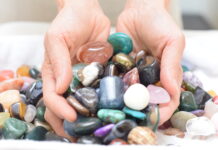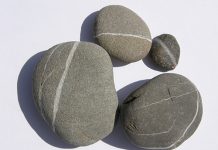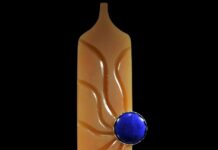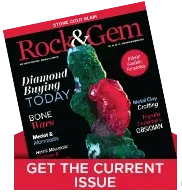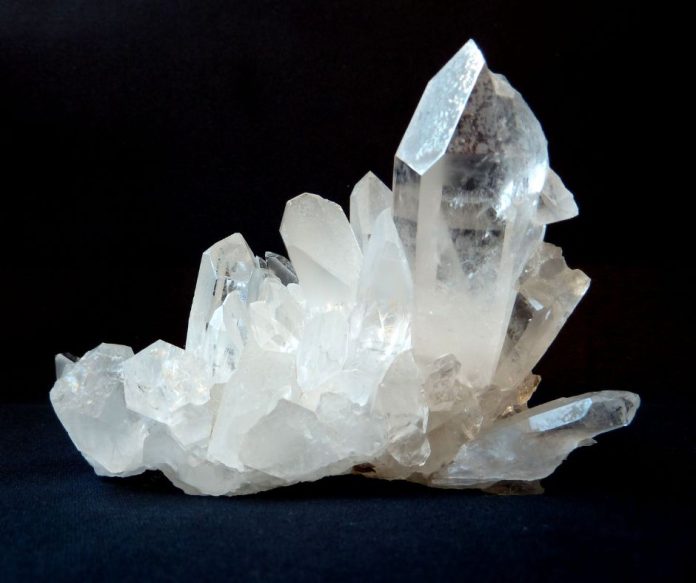
Quartz varieties and forms are numerous. It forms in easily recognizable hexagonal prisms that are attractive and common. It is only exceeded by the feldspar family of six related minerals.
Quartz comes in so many varieties we use it for everything from making concrete to creating fine jewelry. With its attractive mineral colors, we can highlight another mineral included in the quartz. A choice example of this is the golden rutile in quartz from Brazil. Stunning jewelry of golden rutile quartz has won jewelry competitions.
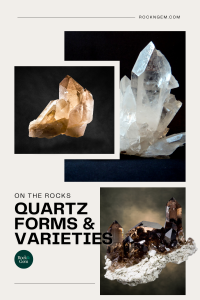
Varied Sizes
Quartz crystals come in every size from crystal grains so large only a forklift can move them or so tiny that magnification is needed to see their perfection. There is a pegmatite quarry in Connecticut where I collected in the 1950s. It had a quartz core of a single hexagonal quartz crystal completely enclosed in the pegmatite rock. The quartz was over six feet high and three feet across. Today huge quartz crystal clusters are used for home decor and have become popular as museum attractions.
Quartz Formation
The chemistry of quartz seems quite simple. A quartz molecule comprises an atom of
silicon and two atoms of oxygen, SiO2. But within this molecule of silicon dioxide is a
myriad of atoms linked to form a unit cell with a tetrahedral shape. A tetrahedron is
three dimensions and each face is triangular.
When the tetrahedrons stack, they are slightly offset which can cause a quartz crystal to develop a slight curve along the “C” axis direction. This slightly curving shape of quartz hexagon crystals is subtle and is seen in the termination of the crystal. The twist will end with a small termination face called a z-face. You can identify the z-face by holding the quartz crystal so that the largest prism is facing you. Look where that prism face ends in contact with a large termination face. The z-face will be left or right on this junction. Many own and use a left or right quartz crystal to match their handedness as an effective part of their daily life.
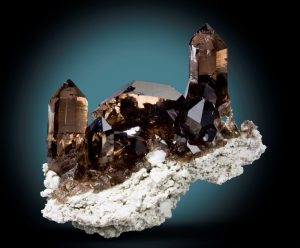
and radiation to create its attractive
color. Photo courtesy Arkenstone
Piezoelectricity
Another property of quartz that is useful is its piezoelectricity, the ability of a mineral to convert mechanical energy to electrical energy when physically stressed. Do you wear a quartz watch? It is accurate because a bit of quartz in the watch is stressed and gives off electrons at a steady rate keeping the watch accurate.
Crystal Quartz Facts
Crystal quartz is extremely hard, a 7 on the Mohs scale, so it will scratch glass. It is transparent and lustrous but does cleave forming a shell-like conchoidal surface. It takes a skilled artist to carve a quartz crystal into gorgeous and delicate objects prized by royalty. The Residence Museum just off the Marienplatz, Munich has a Crystal Room full of breathtaking large, delicate objects carved from individual quartz crystals.
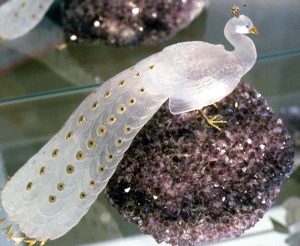
create some amazing quartz art
objects. Photo courtesy Becker Studio
Quartz “Diamonds”
Some of the loveliest quartz crystals are referred to as diamonds because they are perfect transparent crystals and lustrous. Best known are the Herkimer quartz crystals which are so accessible to eastern collectors. They occur in open pockets in hard gray dolostone usually with a quantity of fine quartz crystals in a single pocket.
Less well-known are similar Pecos diamonds in New Mexico along the Pecos River. The quartz diamonds are natural, doubly terminated hexagonal quartz prisms found in quantity in places for which they are named. They range in size from a fraction of inches to inches long.
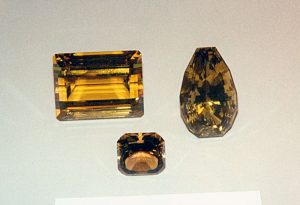
Photo courtesy CMI
Quartz Varieties: Colors
The wonderful array of colors we see in quartz varieties is due to internal changes in the chemistry of the silicon dioxide. For a quartz crystal to have color, impurities must be part of the atomic structure of the quartz.
The impurities that play a role in the color of quartz are aluminum and iron. Smoky quartz depends on aluminum to make it susceptible to outside influences like background radiation which can excite the electrons to absorb some light energy as it enters the quartz so the crystal darkens to a smoky color.
Quartz Varieties: Violet & Yellow Coloration
The most abundant and popular quartz color is amethyst or violet. We often see large curving slabs and geodes of volcanic rock whose interior is lined with lovely violet quartz terminations tightly packed together. Some quartz-lined openings are cavernous enough so people can walk into them.
The trace element in quartz that causes most colors, like violet and yellow, is iron. The valence of four electrons in iron is very unstable so any energy like strong light or sunlight will move the electrons and the amethyst loses its color, slowly fading away and altering from violet to amber or yellow.
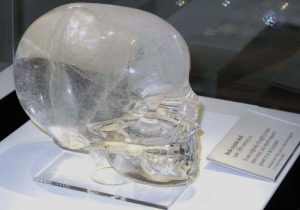
the quartz skulls used to promote
the legend that the skull has strange
powers.
Quartz Skulls
The single best-known quartz object today is probably the carved quartz skull. Thousands of them are offered for sale and all are based on the created fallacy of one skull supposedly dug in an ancient ruin in Central America nearly 100 years ago. The original quartz skull is now in the British Museum. Studies there have shown it to be a recent carving bought at auction in the 1940s and not ancient. The owner devised the story of discovery to use the skull for a traveling display and regaled the audience with a mystical discovery.
I paid to see the skull and hear the story the owner told of digging the skull in an ancient Central American ruin. This skull, known as the Mitchell-Hedges skull was carved from a right-hand twisted quartz, probably from Brazil. It shows modern tool marks and is assumed to have been carved in France and bought at auction by the father of the person who later toured with a self-serving
story of discovery.
Despite such goings-on, quartz is a marvelous mineral that is very necessary and useful. We all enjoy quartz, wearing it and benefiting from the properties of silicon dioxide quartz.
This story about quartz varieties previously appeared in Rock & Gem magazine. Click here to subscribe. Story by Bob Jones.


